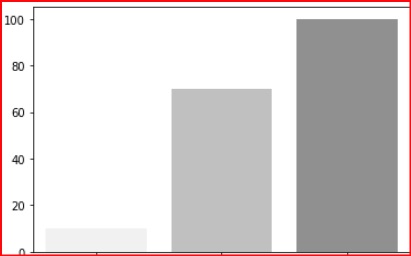Seaborn Palette Widget Introduction
Introduction to Seaborn Palette Widgets
Palette widgets can be categorized into three types: qualitative, continuous, and divergent. In the following chapters, we will learn about and explore each of these in detail.
Qualitative Palettes
Qualitative palettes are used when a variable is categorical in nature, and the colors assigned to each group must be distinct. A color in the qualitative palette is assigned to each potential value of the variable. To understand this example, use the following chart.
sns.barplot(x=["A", "B", "C"], y=[10, 30, 23])
Sequential Palettes
The colors in a sequential palette gradually change from light to dark. When a variable has numeric or intrinsically ordered values, it can be represented using a sequential color palette, as shown in the figure.

Divergent Palettes
Divergent palettes are ideal for visualizing mixed values, such as +V and -V (low and high values).
Functions
A list of all Seaborn functions related to the _ Palette Widget_ is as follows:
| Number | Method and Description |
|---|---|
| 1 | choose_colorbrewer_palette()This method enables the user to select a color from a given palette. |
| 2 | choose_cubehelix_palette()This method enables widgets to select a color from the CubeHelix palette. |
| 3 | choose_light_palette()This method creates a light sequential palette as an interactive widget. |
| 4 | choose_dark_palette()This method creates a dark sequential palette as an interactive widget. |
| 5 | choose_diverging_palette()This method launches a widget that allows the user to easily select a diverging palette. |